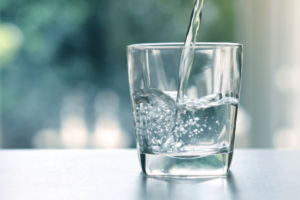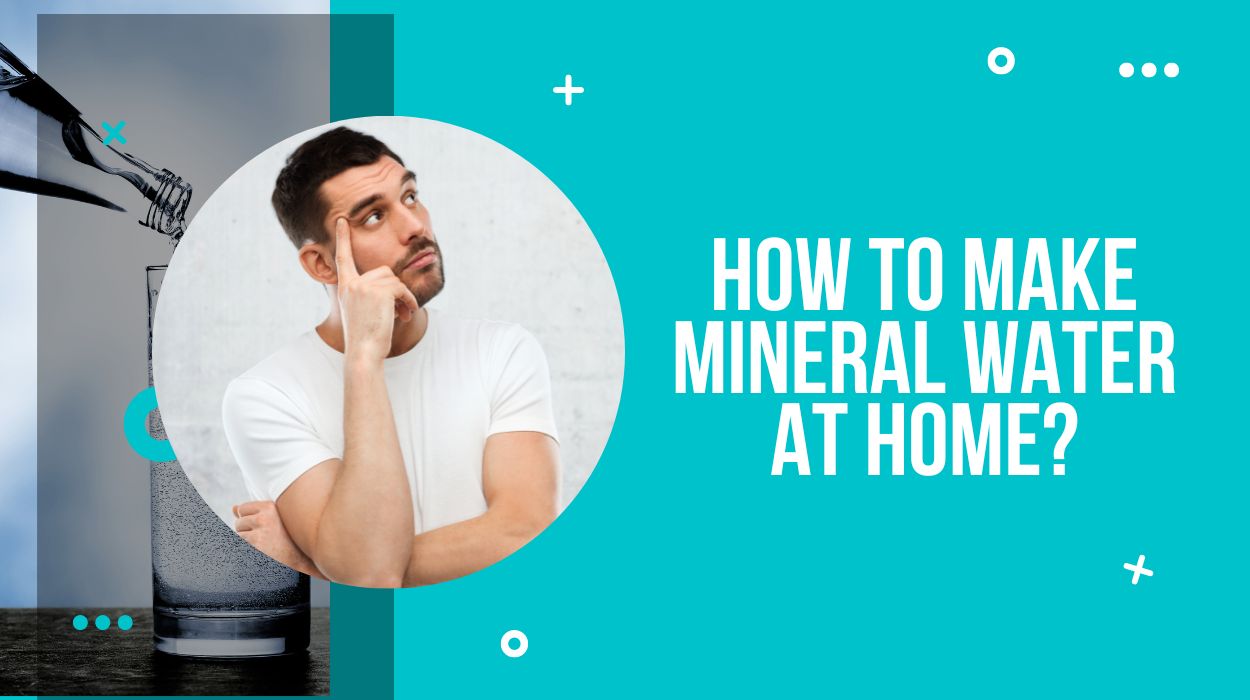From 2024 to 2026, the compound annual growth rate (CAGR) for the bottled water market is expected to grow annually by 5.00%. At the same time, the market value of packaged drinking water amounts up to 310 billion Indian rupees in 2020. However, everyone might not have the facility to buy bottled water, so we need another alternative.
Apart from buying bottled water, we can make mineral water at home using a regular water purifier. This article will provide you with step-by-step guidelines on making mineral water at home.
How to Make Mineral Water at Home?

Making mineral water at home is easy, and it can be done using kitchen ingredients. There are two ways you can make mineral water at home. The result of the first method is alkaline magnesium mineral water, while the second is calcium magnesium mineral water. The former helps to steady the blood pressure and improves heart functioning, while the latter promotes bone health.
Source:
https://www.ncbi.nlm.nih.gov/books/NBK56060/
https://www.who.int/water_sanitation_health/dwq/nutrientsindw.pdf
Alkaline Magnesium Mineral Water
Alkaline magnesium mineral water has numerous health benefits; as a result, it is gaining much popularity. It is known to have a positive effect on bone resorption, helps with acid reflux, reduces cardiovascular strain, etc. Let us look at the ingredients needed to make alkaline magnesium mineral water and the steps involved.
Ingredients –
- Clean vessel – 1
- Tap water – 1 litre
- Baking soda – 1/8th teaspoon
- Epsom salt – 1/8th teaspoon
- Potassium bicarbonate – 1/8th teaspoon
Method to Make Alkaline Magnesium Mineral Water
Step 1 – Filtering tap water using a regular purifier
Since we are using tap water, it is a must to filter the water, which can be done using a regular water purifier. On average, you can take about one to two litres of tap water for filtration. Do not stop the filtration process in between as the impure substances like lead, mercury, etc., in water can cause severe health damage.
After filtration, transfer the water into a clean vessel for the following steps. Ensure that the vessel is large enough to hold the required amount of water so that water does not spill outside when you mix.
Step 2 – Add the required baking soda
This is the first step whereby we convert the purified tap water into mineral water. Ensure that you add only the required amount since adding too much might lead to other health problems. For one litre water, you can add 1/8 teaspoon of baking soda and for two litres, add ¼ teaspoon.
Sodium, found in baking soda, improves indigestion, constipation, bloating problems, and so on. It also helps patients suffering from arthritis.
Source:
https://www.webmd.com/drugs/2/drug-11325/sodium-bicarbonate-oral/details
https://medlineplus.gov/druginfo/meds/a682001.html
Step 3 – Add Epsom salt
The next step involves adding Epsom salt to the water. The quantity of Epsom salt is similar to baking soda – for one-litre tap water, add 1/8 teaspoon of salt, and add ¼ teaspoon of Epsom salt for two litres.
While baking soda helps improve indigestion problems, Epsom salt helps to keep the bacterial/fungal infections at bay. This provides the already filtered water with disinfectant properties.
Step 4 – Add potassium bicarbonate
This is the last step where we add ingredients into the filtered tap water. Like the last two ingredients, we add 1/8 teaspoon potassium bicarbonate for one-litre water and ¼ teaspoon for two litres of filtered water.
Even potassium bicarbonate has health benefits as it helps maintain the blood pressure level in our body, which indirectly controls and reduces the risk of cardiovascular diseases.
Step 5 – Mix all the ingredients well
This is the last step where we mix all the ingredients well using a soda siphon. A soda siphon simplifies the mixing process. In simple terms, we squeeze the water that passes through the handle, and from the other end of the siphon where the cartridge is attached, we get the purified mineralized water.
If you don’t want to mix all the ingredients towards the end, you can mix after you add each ingredient.
Calcium Magnesium Mineral Water
Calcium and magnesium found in mineral water benefit us in numerous ways. It improves our bone and teeth health, digestion health, replenishes electrolytes, and even regulates blood pressure and keeps cardiovascular diseases at bay. Given below are the ingredients and steps needed to make calcium-magnesium mineral water.
Ingredients –
- Clean vessel – 1
- Tap water – 1 liter
- Epsom salt – 1/8th teaspoon
- Calcium chloride – 1/8th teaspoon
Method to Make Calcium Magnesium Mineral Water
Refer to alkaline magnesium mineral water and follow steps 1 and 3. Instead of step 2 and step 4, we add calcium chloride. So, for one litre filtered water, add 1/8 teaspoon of calcium chloride, and for two liters, we add ¼ teaspoon of calcium chloride.
This mineral helps to promote bone density and strengthen our bones. For the final step, refer to step 5 mentioned above.
Verdict –
Making mineral water is not as complicated as it sounds; you just need a few kitchen ingredients like baking soda, Epsom salt, potassium bicarbonate, and calcium chloride. Follow the steps one by one, and you will not go wrong. Not only is it simple to make, but it also has numerous benefits like controlling blood pressure, reducing the risk of cardiovascular diseases, improving bone and tooth health, and so on.
Did you find this article helpful? Do you know any other method to make mineral water at home? Please do let us know in the comment section below.


